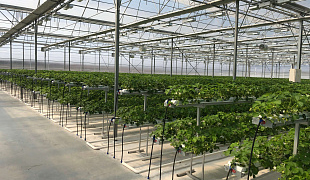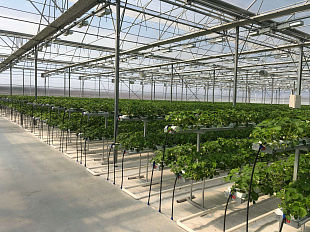Representatives of the Russian greenhouse industry can ask the authorities to subsidize the dramatically increased energy costs. This is, first of all, regarding greenhouse complexes that use supplementary lighting for year-round work. Over five years, prices for electricity increased by 37%, gas by 28%, and the share of energy resources in the prime cost is more than 50%.
“In my opinion, subsidizing energy costs for greenhouses with light culture will certainly be a great help for our greenhouse farms, especially from late autumn to mid-spring,” Tamara Reshetnikova, the general director of “Technologies of Growth” company commented to Agroinvestor. She adds that the problem is that, so far, there are no real signs that the increase in price will slow down.
Priority areas
This year, the Ministry of Agriculture made changes to the state program for development of agriculture and included greenhouse vegetable growing among the priority areas for which incentive subsidies are allocated per ton of products sold, which is good support for the industry, according to Guriy Shilov, board member of the Fruit and Vegetable Union. However, given the current economic situation and rising costs, it may not be enough, and the industry union may have to re-initiate the issue of subsidizing energy costs for greenhouse complexes that use supplementary lighting for year-round production.
Energy resources are the main drivers of cost growth. In addition, the prices for plant protection products and fertilizers rose significantly, and the cost of containers and packaging showed an unprecedented growth of 40-45% in the first six months of 2021. At the same time, the increase in wholesale prices for the products of greenhouse complexes is insignificant: in the first half of this year, compared to 2019, prices for cucumbers increased by only 5%, for tomatoes by 4%.
Acceptable economic conditions
The head of the Fruit and Vegetable Union Mikhail Glushkov clarified that a new support measure for subsidizing per ton of products sold will in fact begin to operate from next year. “And, only if this is not enough to create acceptable economic conditions for greenhouse complexes, we will consider the possibility of applying to the government for subsidizing energy costs,” he said. According to Glushkov, the initiative of the Fruit and Vegetable Union to subsidize energy costs was already discussed with the Minister of Agriculture Dmitry Patrushev in October last year, but then it was decided to follow the path of a stimulating subsidy.
The profitability of the greenhouse industry in 2019 was 16%, in 2020 7%, and in 2021 it is expected to reach 9%. The strong drawdown of the last year is explained by self-isolation and a decrease in demand. This year, wholesale prices are approximately at the level of 2019. In fact, they are higher than in 2020, but due to an increase in production costs, profitability is lower than in 2019.
Costs of logistics
Judging by the data from market players, over the past year, the cost of production has really increased significantly, especially in greenhouses with a light culture, confirms Reshetnikova. But the matter is not only in the tariffs for electricity and gas: the cost of logistics is growing even faster and stronger. The increase for the year, according to various estimates, ranged from 50% to 100%, which was reflected not only in greenhouse vegetables. Also, due to the rise in the cost of gas and electricity, the costs of fertilizers, plant protection products, fuels and lubricants, metals, and, consequently, machinery, equipment, etc., have increased significantly.
The cost of production of greenhouse vegetables for the year increased by an average of 25%. This is especially noticeable in those farms where business processes are not very clearly controlled, and energy consumption is not efficient. In new greenhouses with good energy management, the cost increase was much less. “It will be great if the state gives additional subsidies, but if they increase in this area, it means that there will be less subsidies in another state, and those who work in open field also need help, because they also have growing costs for fuels and lubricants, metals, fertilizers, and plant protection products,” Reshetnikova emphasizes.
































